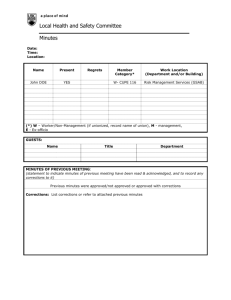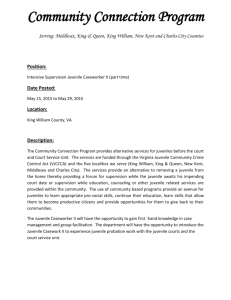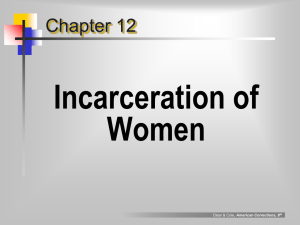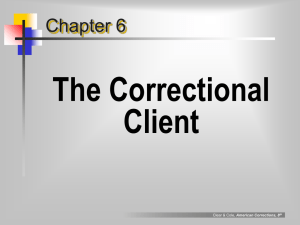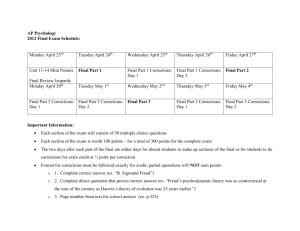Corrections for Juveniles
advertisement
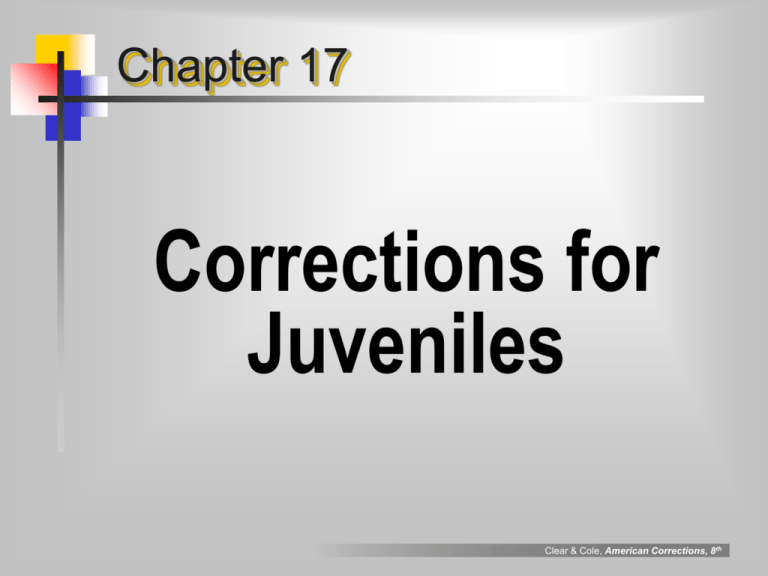
Chapter 17 Corrections for Juveniles Clear & Cole, American Corrections, 8th Corrections for Juveniles The Problem of Youth Crime History of Juvenile Corrections Juvenile Corrections: English Antecedents Juvenile Corrections in the United States Differences between Adults and juveniles, in Perspective Why Treat juveniles and Adults Differently? The Problem of Serious Delinquency Sanctioning juvenile Offenders Overview of Juvenile Justice System Disposition of Juvenile Offenders Clear & Cole, American Corrections, 8th “parens patriae” the “parent of the country”; the role of the state as guardian and protector of all people (particularly juveniles) who are unable to protect themselves Clear & Cole, American Corrections, 8th Evolution of juvenile justice in America, 1600s - 2000 Crime Control Juvenile Rights 1960 - 1980 •In re Gault, 1967 •JJ & Del. Prev. Act, 1974 deinstitutionalize status offenders •legalization of juv. law Juvenile Court 1899 - 1960 •Ill. Juv. Crt, 1899 •separate legal system for juv’s •child as “legally irresponsible” 1980 - 2007 •victim emphasis •punishment of serious offenders •waive serious cases Refuge Period 1824 - 1899 •NY House of Refuge, 1825 for delinquent & dependent children • child as “helpless” Puritan Period 1646 - 1824 •Mass. Stubborn Child Law, 1646 •child as “evil” Clear & Cole, American Corrections, 8th Julian W. Mack Julian W. Mack (1866-1943) One of the foremost innovators in juvenile justice, Mack presided over Chicago’s juvenile court from 1904 to 1907. He believed that the proper work of the court depended on the judge, supported by probation officers, caseworkers, and psychologists. He sought as much as possible to avoid using reformatories and tried to bring the expertise of social service professionals to the courts. Clear & Cole, American Corrections, 8th hallmarks of juvenile court informality not hindered by legalities of “due process” judges ran sessions as conversations exploring needs of child individualization each child is unique and has unique circumstances, problems, and needs intervention aim not to punish, but to help child become law-abiding identify and solve problems; provide treatment Clear & Cole, American Corrections, 8th “delinquent” a child who has committed an act which, if committed by an adult, would be criminal Clear & Cole, American Corrections, 8th “neglected” a child who is not receiving proper care because of some action or inaction of his or her parents Clear & Cole, American Corrections, 8th “dependent” a child who has no parent or guardian or whose parents are unable to give proper care Clear & Cole, American Corrections, 8th “In Re: Gault” watershed Supreme Court case granting “essential” due process rights to juveniles facing adjudication by juvenile court notice hearing counsel cross-examination Clear & Cole, American Corrections, 8th why treat juveniles differently juveniles are young and may easily change more susceptible to treatment most never get in trouble again state acts in partnership w/ family to treat child juvenile crime is a group phenomenon removed from the group, child will behave easier to get them to isolate & modify behavior juveniles have a high rate of ‘desistance’ juveniles’ juveniles juveniles families important to their lives are easily influenced by peers have little responsibility for others Clear & Cole, American Corrections, 8th Female Offense proportion Clear & Cole, American Corrections, 8th Juvenile Delinquents in Public Custodial Facilities Clear & Cole, American Corrections, 8th Characteristics of Youth Who Belong to a Gang Clear & Cole, American Corrections, 8th % arrests involving juveniles by crime Clear & Cole, American Corrections, 8th high risk juvenile offenders factors of concern persistent behavior problems in elementary school years onset of delinquency, aggression, drug use between 6 & 11 antisocial parents antisocial peers, poor school attendance, impulsivity, weak social ties between 12-14 membership in delinquent gangs drug dealing Clear & Cole, American Corrections, 8th juvenile offender dispositions waiver (to adult court) diversion correctional programs detention juvenile probation working in the school intermediate sanctions juvenile community corrections juvenile incarceration juvenile aftercare Clear & Cole, American Corrections, 8th
